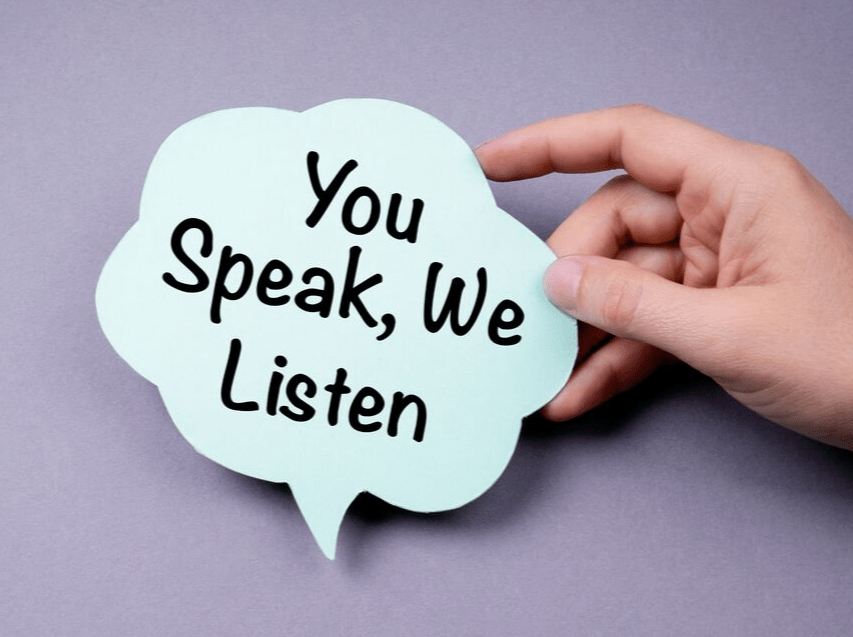
27 Sep Can Social Media Get Your Message Out Effectively?
We are long past the days when businesses considered social media “free advertising.” However, if you’re a business owner or company decision-maker who still has this mindset, you, especially, need to keep reading! Navigating the constantly changing social media landscape is more challenging than ever. But successfully getting your message out – and engaging your target audience – is possible. It’s just a matter of working smarter. Here’s advice from the experts!
Who are your customers, anyway?
This may seem to be a question so basic it borders on insulting. Yet Certified Social Media Strategist Marianne Hynd brings up an intriguing client conversation that begins with the client asking why their marketing campaign failed. The question, “Who were you targeting” was followed by “Our customers.” “Okay,” came the reply, “but who are your customers?” The answer: “They’re our customers.”
Hynd writes, “Even with the best imagery, clever copy, and a strong call to action, the best campaigns can fail if not speaking to the right people.”
Audience demographics count, of course, but acknowledging and addressing traits your audience have in common is a big boost in effective messaging. As an example, Hynd relates an incident in her neighborhood, which had been experiencing daytime sightings of coyotes. Calls to the police department from alarmed residents prompted the department to post a creative response on its Facebook page.

Reassuring citizens there was no cause for concern and to not call, the post went beyond the predictable and mentioned coyote behavior that people should be on the lookout for – then listed the classic shticks of cartoon character Wile E. Coyote. For example: “Coyote carrying a box marked ACME.”
Facebook comments were positive, and the police department’s point made. But when Hynd showed the post to her 16-year-old son – who, like most of his generation did not grow up on Warner Bros. cartoons – he didn’t get the joke. Hynd realized that he didn’t have to.
“What was successful to catch my attention would fail miserably had they been targeting my son’s age group. That’s when I realized this is a great example of knowing your audience outside of the fact that they are ‘our customers.’ They are more than that – they are a group of individuals who share some common traits beyond being your customer. Successful marketing research & planning identifies those commonalities and uses them to their advantage when possible.”
So how can you learn more about your audience?
Applying the methodology of content analysis is helpful in obtaining the valuable information you need to effectively reach and engage with members of your target market. A number of social media analytics tools for brands are available, but most are paid services (after an introductory trial period). Using your powers of observation is free, albeit time-consuming. Here are some basic tactics.
Ask them and listen to them – Facebook surveys – especially when accompanied by an engaging photo or video – are a great way to gain insight. Make the questions engaging, as well, so your audience members don’t feel like they’re being used for some statistical study.
Perhaps even more important than asking is listening. Sprout Social details the importance of social media listening in building a relationship with your audience.

“With our social audiences, we tend to push out information (owned content) and measure the effect of that content. Sometimes we forget to begin by listening to our audiences and building content around what they actually care about.
“We end up pushing out content that just isn’t quite right. It’s like your friend telling you about a Golden Retriever puppy she wants to adopt and asking for your advice, and you responding by listing out your favorite qualities of Labradoodles. Tangentially related, but not quite right. We marketers fall into the trap an awful lot.”
Sprout Social also emphasizes the importance of empathy in the listening process, recommending that you pay attention to what your audience is saying on social media platforms, forums and blogs.
“By building a solid foundation of empathy for your audience’s wants and needs – and how those wants and needs evolve throughout the customer journey – you’re also building better content, responses, and, ultimately, sentiment around your brand.”
Learning about your audience from experience is valuable, although seldom done, according to Sprout Social. Marketers tend to commit to a campaign, regard it as a success or failure, then “… move on too quickly to learn and document valuable lessons that can help us do better in the future … Continue adding to your (separate) lists of customer knowledge and self-knowledge regularly as time passes and the data keeps rolling in.”
Closely related is determining your target audience’s level of engagement with your brand or business.
As Sprout Social observes, “Understand how your audience prioritizes you, and you’ll be able to adjust your brand’s behavior accordingly. This doesn’t mean that you’re going to stop targeting customers or potential customers who like another brand over your brand. But it does mean that you might go more aggressively after one customer segment and veer away from another, or that you might spend more time doing competitive campaigning against one particular brand on social. The only way you’ll be able to prioritize correctly is by understanding where you sit in relationship to competitors in your (target) audience’s eyes.”
Targeting Based on Interest
Once you know who your current and potential customers are, target them based on their interests. In the digital marketing industry, interest-based targeting refers to social media advertising – Facebook, in particular. Facebook ads also allow targeting based on location, demographics and behavior.
As noted by Hootsuite’s AdEspresso tutorial series, The Beginner’s Guide to Facebook Advertising, “Interests are one of the best (and easiest) Facebook ads targeting options as they allow you to target people specifically interested in a subject related to your product. For example, you could target people interested in your competitors or your broader market segment, or magazines and blogs covering your market.
“The interests are based on Facebook users’ likes and interests, apps they use, Pages they’ve Liked, and more.”
Our August 2, 2019 blog post – “Why Should Your Business Invest in Facebook Ads?” – covers the main advantages:
- Facebook’s power to drive buying decisions.
- Ability to precisely target your audience and marketing objectives.
- Ability to track your ads and easily measure results.
- Ability to let you remarket (show your ads to people after they’ve visited your website, used your mobile app or given you their email address – even if they didn’t buy from you).
- Facebook ads are very economical, and provide outstanding ROI.
Those familiar with Facebook ads may have felt stymied by not being allowed by Facebook to target Facebook Groups with Facebook ads. Digital marketing pro Jennifer Spivak found a workaround allowing businesses to do just that. If you proceed, however, do so with caution. The people you’re trying to reach may resent seeing an ad where they don’t expect or want to see one – in which case you’ll repel, rather than attract, potential customers. Being perceived as a spammer can easily backfire!
As you’ve learned, well-informed, well-targeted social media campaigns can help you achieve your business goals – yet most small-to-medium-size businesses lack the time and resources necessary to dedicate the focus needed to succeed. Our social media marketing team at Virtual Stacks Systems is ready to work with you! In addition to social media services, we offer PPC advertising, website design and redesign, SEO marketing, review management services, social media marketing, video production and much more!
Contact us today to get started!
